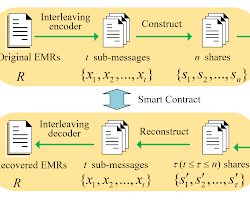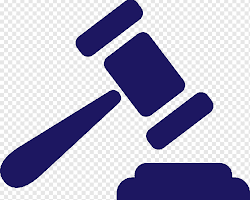Top 10 Blockchain Trends That Ensures Secure Storage
Blockchain is a decentralized and immutable digital ledger technology that enables the secure and transparent storage and transmission of data. It was first introduced as the underlying technology for Bitcoin, the pioneering cryptocurrency, but its applications have expanded far beyond digital currencies. Blockchain trends has gained recognition as a transformative technology with the potential to revolutionize various industries, including finance, supply chain management, healthcare, real estate, and more.
At its core, a blockchain is a distributed database or ledger that records transactions across multiple computers or nodes. Each transaction is bundled together in a block, and these blocks are linked together in a chronological order, forming a chain of blocks—hence the term “blockchain.” The blocks contain a cryptographic hash of the previous block, which ensures the integrity and immutability of the data. Once a block is added to the chain, it becomes extremely difficult to alter or tamper with the information contained within it.
One of the fundamental features of blockchain is decentralization. Traditional centralized systems rely on a single authority or intermediary to validate and authorize transactions. In contrast, a blockchain operates on a peer-to-peer network where every participant, or node, has a copy of the entire blockchain. This decentralized nature eliminates the need for a central authority and allows for a trustless system where transactions can be verified and validated by consensus among the network participants.
Consensus mechanisms play a crucial role in maintaining the integrity of the blockchain. These mechanisms ensure that all nodes in the network agree on the validity of transactions and the order in which they are added to the blockchain. The most well-known consensus mechanism is Proof of Work (PoW), which requires nodes to solve complex mathematical puzzles to validate blocks. Once a node successfully solves a puzzle, it can add the block to the blockchain and receive a reward, typically in the form of cryptocurrency. Other consensus mechanisms, such as Proof of Stake (PoS) and Delegated Proof of Stake (DPoS), have emerged as more energy-efficient alternatives to PoW.
Blockchain technology provides several key advantages. Firstly, it offers transparency and auditability since all transactions are recorded on the blockchain and can be accessed by any participant. This transparency reduces the potential for fraud and increases trust among parties. Secondly, blockchain enhances security by utilizing advanced cryptographic algorithms. As each block is linked to the previous one through hashes, altering a single block would require altering all subsequent blocks, which is computationally infeasible. Additionally, blockchain eliminates the single point of failure that exists in centralized systems, making it more resilient to cyber attacks and system failures.
Moreover, blockchain enables the concept of smart contracts, which are self-executing contracts with predefined rules and conditions written into code. Smart contracts automatically enforce the terms of an agreement, eliminating the need for intermediaries and reducing transaction costs and delays. They have numerous applications, including in financial services, supply chain management, and decentralized applications (DApps).
Despite its potential, blockchain technology faces challenges. One significant hurdle is scalability—the ability to handle a large number of transactions quickly and efficiently. Blockchains like Bitcoin and Ethereum have experienced scalability issues due to their design limitations. Efforts are underway to address this challenge through techniques such as sharding, layer-two solutions, and the development of new blockchain platforms.
In conclusion, blockchain is a revolutionary technology that offers decentralized, transparent, and secure systems for recording and verifying transactions. Its potential to disrupt various industries and streamline processes is substantial. As the technology continues to evolve, we can expect to see further innovation and adoption of blockchain in diverse fields, shaping the future of how we transact and interact with digital information.
Also read: 5 Popular Distributed Ledger and Blockchain Trends in 2021
Importance of Blockchain trends for the economy
Blockchain trends holds significant importance for the economy due to its potential to transform various aspects of financial systems and beyond. Here are some key areas where blockchain’s importance is evident:
1. Enhanced Efficiency and Cost Reduction: Blockchain has the potential to streamline and automate numerous financial processes, reducing the need for intermediaries and manual reconciliation. By eliminating middlemen and complex paperwork, blockchain can significantly improve operational efficiency and reduce costs associated with traditional systems. For example, cross-border payments can become faster, cheaper, and more transparent by leveraging blockchain technology.
2. Increased Transparency and Trust: Trust is a critical element in economic systems, and blockchain offers a transparent and auditable platform for transactions. The decentralized nature of blockchain ensures that all participants have access to the same information, eliminating information asymmetry and reducing the potential for fraud or manipulation. This increased transparency and trust can lead to improved confidence among businesses, investors, and consumers, ultimately fostering economic growth.
3. Secure and Immutable Data: Blockchain’s underlying cryptographic algorithms and consensus mechanisms make it highly secure. Once a transaction is recorded on the blockchain, it becomes practically impossible to alter or tamper with the data, ensuring the integrity and immutability of information. This feature is particularly valuable in areas such as supply chain management, where stakeholders can trace and verify the origin and authenticity of goods, reducing counterfeiting and enhancing consumer safety.
4. Financial Inclusion: Blockchain has the potential to address the issue of financial exclusion by providing access to financial services for the unbanked or underbanked populations. Through blockchain-based platforms, individuals can have control over their financial transactions and access services such as payments, remittances, and loans without the need for a traditional bank account. This can empower individuals and small businesses, promoting economic participation and growth.
5. Tokenization and Asset Ownership: Blockchain enables the tokenization of real-world assets, such as real estate, art, or commodities. By representing these assets as digital tokens on a blockchain, they can be divided, traded, and owned by multiple individuals, fostering liquidity and fractional ownership. Tokenization has the potential to unlock value in illiquid assets and create new investment opportunities, making the economy more inclusive and accessible.
6. Smart Contracts and Automation: Blockchain-based smart contracts automate the execution and enforcement of contractual agreements. These self-executing contracts eliminate the need for intermediaries, reduce costs, and minimize the potential for disputes. Smart contracts can be particularly transformative in areas such as insurance, supply chain management, and financial derivatives, where complex contractual relationships can be automated, improving efficiency and reducing risks.
7. Innovation and Entrepreneurship: Blockchain technology provides a fertile ground for innovation and entrepreneurship. Startups and developers can leverage blockchain platforms to create decentralized applications (DApps) and new business models. The open and permissionless nature of blockchain allows anyone to participate and build applications on top of existing platforms, fostering a vibrant ecosystem of innovation and collaboration.
However, it is important to note that blockchain technology is still evolving, and there are challenges to overcome, such as scalability, interoperability, and regulatory frameworks. Additionally, the adoption of blockchain requires collaboration among stakeholders, including governments, businesses, and consumers, to establish standards, address legal implications, and ensure widespread acceptance.
In conclusion, the importance of blockchain for the economy lies in its potential to improve efficiency, transparency, security, and inclusivity in financial systems. By leveraging blockchain technology, economies can experience streamlined processes, reduced costs, increased trust, and new opportunities for innovation and entrepreneurship. As the technology continues to mature and gain wider adoption, its impact on the economy is likely to be profound.
Also read: What are the latest blockchain trends?
Top 10 Blockchain Trends that ensures Secure Storage
Blockchain technology is known for its security and immutability, making it a natural fit for storing sensitive data. In recent years, there have been a number of new blockchain trends that are further improving the security of data storage.
Here are the top 10 blockchain trends that ensure secure storage:
- Privacy-preserving blockchains. These blockchains use encryption techniques to protect the privacy of data stored on the blockchain. For example, Zcash and Monero are two privacy-preserving blockchains that use zero-knowledge proofs to hide the sender, recipient, and amount of each transaction.

- Decentralized storage. Decentralized storage refers to the storage of data on a network of nodes that are not controlled by any single entity. This makes it more difficult for hackers to attack or censor the data. Storj and Filecoin are two examples of decentralized storage platforms that use blockchain technology.
- Smart contracts. Smart contracts are self-executing contracts that are stored on the blockchain. They can be used to automate the execution of transactions, which can help to improve security and reduce the risk of fraud.

- Blockchain auditing. Blockchain auditing is the process of inspecting a blockchain network to identify security vulnerabilities. This can help to prevent hackers from exploiting these vulnerabilities to attack the network.
- Blockchain security solutions. There are a number of blockchain security solutions that can help to protect data stored on the blockchain. These solutions include encryption, access control, and intrusion detection systems.

- Blockchain education. As blockchain technology becomes more widespread, there is a growing need for blockchain education. This education can help people to understand the security risks associated with blockchain and how to mitigate these risks.
- Government regulation. Governments around the world are starting to regulate blockchain technology. This regulation is aimed at protecting users and investors from fraud and other malicious activity.

- Industry collaboration. The blockchain industry is collaborating to develop new security standards and best practices. This collaboration is helping to improve the security of blockchain networks and data.
- Research and development. There is a lot of research and development being done on blockchain security. This research is helping to identify new security risks and develop new security solutions.

- Public awareness. As more people become aware of blockchain technology, there is a growing demand for security. This demand is driving the development of new security solutions and best practices.
These are just a few of the blockchain trends that are ensuring secure storage. As blockchain technology continues to evolve, we can expect to see even more innovative security solutions being developed.
Risks of using Blockchain
While blockchain technology offers numerous advantages, it is important to consider the risks associated with its implementation. Here are some key risks to consider when using blockchain:
1. Security Vulnerabilities: While blockchain is considered secure due to its cryptographic algorithms, it is not immune to security vulnerabilities. Smart contracts, for instance, can have coding flaws or be subject to hacking attempts, leading to financial losses or unauthorized access to sensitive information. Additionally, individual nodes or participants in a blockchain network can be targeted by cyber attacks, compromising the overall security of the system.
2. Governance and Regulatory Challenges: Blockchain operates in a decentralized manner, which can make governance and regulation complex. The absence of a central authority means that decision-making, system upgrades, and dispute resolution can be challenging. Regulatory frameworks and legal considerations for blockchain-based systems are still evolving, and uncertainty in this regard can hinder adoption or lead to compliance issues.
3. Scalability and Performance Limitations: Blockchain networks face scalability challenges as the number of transactions increases. Public blockchains like Bitcoin and Ethereum have faced limitations in terms of transaction throughput and confirmation times. As more participants join the network and the volume of transactions grows, scalability becomes a critical concern. Scaling solutions such as sharding and layer-two protocols are being developed, but widespread implementation is still in progress.
4. Energy Consumption: Some blockchain networks, especially those that rely on the Proof of Work (PoW) consensus mechanism, consume substantial amounts of energy. The computational power required for mining blocks in PoW blockchains can have a significant environmental impact. While alternative consensus mechanisms like Proof of Stake (PoS) are more energy-efficient, addressing the energy consumption concern remains important for sustainable blockchain adoption.
5. Privacy and Confidentiality: Blockchain is designed to be transparent and immutable, which can present challenges when it comes to privacy and confidentiality. While certain blockchain networks allow for pseudonymous transactions, the traceability of blockchain transactions can potentially reveal sensitive information. This can be a concern in industries where data privacy is crucial, such as healthcare or financial services.
6. Lack of Interoperability: Interoperability refers to the ability of different blockchain networks to communicate and interact with each other seamlessly. Currently, there is a lack of standardization and compatibility between different blockchain platforms, making it difficult to exchange information or assets between disparate networks. The lack of interoperability can limit the potential benefits of blockchain technology and hinder its widespread adoption.
7. Social and Ethical Considerations: Blockchain technology can disrupt traditional systems and business models, leading to social and ethical implications. It may displace certain job roles and impact industries that rely heavily on intermediaries. There can also be concerns about the concentration of power, as early adopters or large entities may control significant portions of blockchain networks, potentially leading to centralization issues.
It is important to note that these risks are not inherent to blockchain technology itself but rather relate to its implementation and the specific use cases. Organizations and individuals considering the adoption of blockchain should carefully assess these risks and implement appropriate measures to mitigate them. This may involve conducting thorough security audits, adhering to regulatory frameworks, implementing privacy-enhancing technologies, and actively addressing governance and scalability challenges. By understanding and addressing these risks, the potential benefits of blockchain technology can be realized while minimizing potential negative impacts.
Future of Blockchain
The future of blockchain technology holds immense potential for transformative impact across various industries and sectors. While the technology is still evolving, several trends and developments provide insights into its future trajectory:
1. Mainstream Adoption: As blockchain technology matures, we can expect increased adoption across industries and sectors. Organizations are recognizing the benefits of blockchain, such as enhanced efficiency, transparency, and security. Governments are also exploring the use of blockchain for public services, identity management, voting systems, and more. With ongoing research, technological advancements, and regulatory frameworks taking shape, blockchain is likely to become an integral part of the global economy.
2. Interoperability and Standardization: Interoperability remains a key challenge for blockchain. Efforts are underway to establish common standards and protocols that enable different blockchain networks to communicate and interact seamlessly. The development of interoperability solutions will facilitate the exchange of assets and information across disparate blockchain platforms, unlocking new possibilities for collaboration and innovation.
3. Scalability Solutions: Scalability has been a significant concern for blockchain networks, particularly public blockchains like Bitcoin and Ethereum. However, various scaling solutions are being researched and implemented. Sharding, layer-two protocols (e.g., Lightning Network), and other advancements aim to increase transaction throughput and improve the scalability of blockchain networks. These developments will pave the way for broader adoption and support the growth of decentralized applications.
4. Hybrid Blockchain Solutions: Hybrid blockchains, combining the benefits of both public and private blockchains, are gaining attention. They provide a balance between transparency and privacy, catering to the diverse needs of different industries. Hybrid blockchains can enable organizations to leverage the advantages of blockchain technology while maintaining control over sensitive data and adhering to regulatory requirements.
5. Integration with Internet of Things (IoT): The integration of blockchain with IoT has the potential to revolutionize industries like supply chain management, logistics, and healthcare. Blockchain can enhance the security and trustworthiness of IoT networks by providing an immutable record of device interactions, ensuring data integrity, and enabling automated transactions between connected devices. This integration can unlock new levels of efficiency, transparency, and automation.
6. Tokenization of Assets: The tokenization of real-world assets, such as real estate, art, and commodities, is expected to gain traction. By representing these assets as digital tokens on a blockchain, fractional ownership, liquidity, and accessibility can be enhanced. Tokenization has the potential to democratize investment opportunities, increase market liquidity, and unlock value in traditionally illiquid assets.
7. Enhanced Privacy and Confidentiality: While blockchain is inherently transparent, advancements in privacy-enhancing technologies are being developed. Solutions such as zero-knowledge proofs, ring signatures, and secure multi-party computation aim to provide privacy and confidentiality while preserving the integrity of blockchain transactions. These developments will enable blockchain adoption in sectors where privacy is crucial, such as healthcare and finance.
8. Sustainability and Energy Efficiency: The energy consumption of certain blockchain networks, particularly those using PoW consensus, has raised concerns. The future of blockchain will likely see increased focus on sustainability and energy efficiency. More energy-efficient consensus mechanisms like PoS, as well as advancements in green blockchain solutions, will address these concerns and contribute to the sustainable adoption of blockchain technology.
In conclusion, the future of blockchain is promising, with widespread adoption, interoperability, scalability solutions, and integration with emerging technologies. As blockchain matures and overcomes current challenges, it has the potential to reshape industries, enhance transparency, and revolutionize business processes. Continued research, innovation, and collaboration among industry stakeholders will shape the future trajectory of blockchain technology and its transformative impact on the global economy.
Stay informed with daily updates from Blockchain Magazine on Google News. Click here to follow us and mark as favorite: [Blockchain Magazine on Google News].
Get Blockchain Insights In Inbox
Stay ahead of the curve with expert analysis and market updates.
latest from tech
Disclaimer: Any post shared by a third-party agency are sponsored and Blockchain Magazine has no views on any such posts. The views and opinions expressed in this post are those of the clients and do not necessarily reflect the official policy or position of Blockchain Magazine. The information provided in this post is for informational purposes only and should not be considered as financial, investment, or professional advice. Blockchain Magazine does not endorse or promote any specific products, services, or companies mentioned in this posts. Readers are encouraged to conduct their own research and consult with a qualified professional before making any financial decisions. The featured image used is just a creative depiction of the title and it does not intend to hurt sentiments of any person or institution. If it hurts anyone sentiments, please do not hesitate to reach out to Blockchain Magazine.

 Bitcoin
Bitcoin  Ethereum
Ethereum  XRP
XRP  Tether
Tether  Solana
Solana  Dogecoin
Dogecoin  USDC
USDC  Cardano
Cardano  Lido Staked Ether
Lido Staked Ether  TRON
TRON  Chainlink
Chainlink  Avalanche
Avalanche  Wrapped stETH
Wrapped stETH  Wrapped Bitcoin
Wrapped Bitcoin  Sui
Sui  Toncoin
Toncoin  Stellar
Stellar  Hedera
Hedera  Shiba Inu
Shiba Inu  WETH
WETH  Polkadot
Polkadot  LEO Token
LEO Token  Litecoin
Litecoin  Bitcoin Cash
Bitcoin Cash  Bitget Token
Bitget Token  Hyperliquid
Hyperliquid  Official Trump
Official Trump  Uniswap
Uniswap  USDS
USDS  Wrapped eETH
Wrapped eETH  Pepe
Pepe  NEAR Protocol
NEAR Protocol  Ethena USDe
Ethena USDe  Aave
Aave  Aptos
Aptos  Internet Computer
Internet Computer  Monero
Monero  WhiteBIT Coin
WhiteBIT Coin  Ethereum Classic
Ethereum Classic  Ondo
Ondo  Cronos
Cronos  POL (ex-MATIC)
POL (ex-MATIC)  Mantle
Mantle  Render
Render  Dai
Dai  MANTRA
MANTRA  Algorand
Algorand 




